Greenhouses
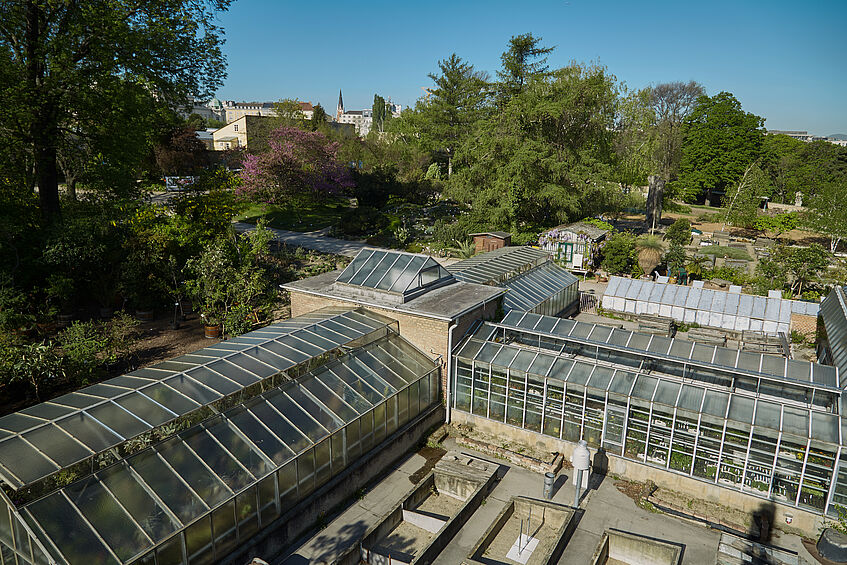
Gewächshäuser © Yannik Steer
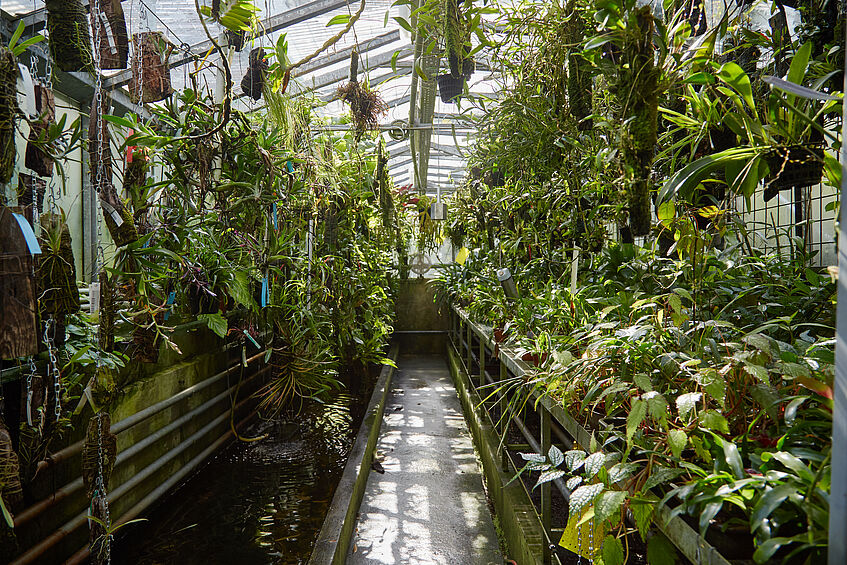
Gewächshäuser, Warmhaus © Yannik Steer
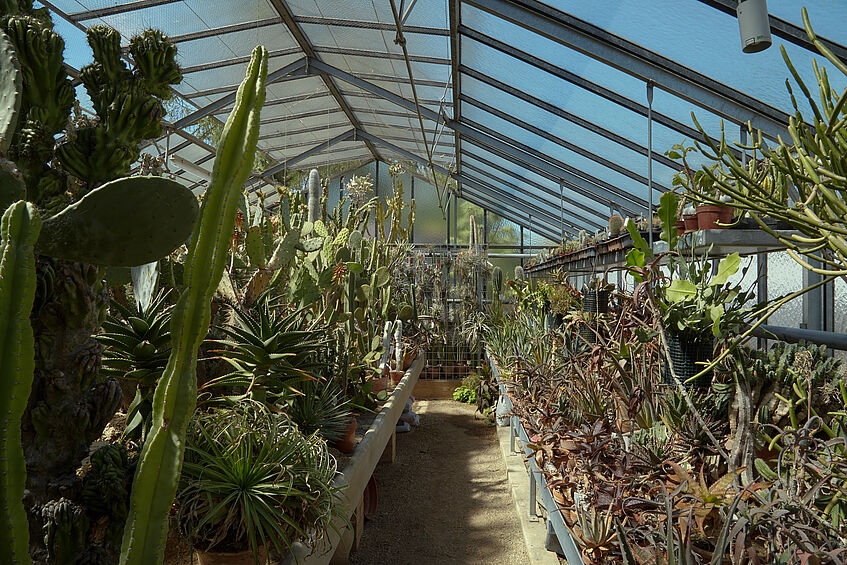
Gewächshäuser, Sukkulentenhaus © Yannik Steer
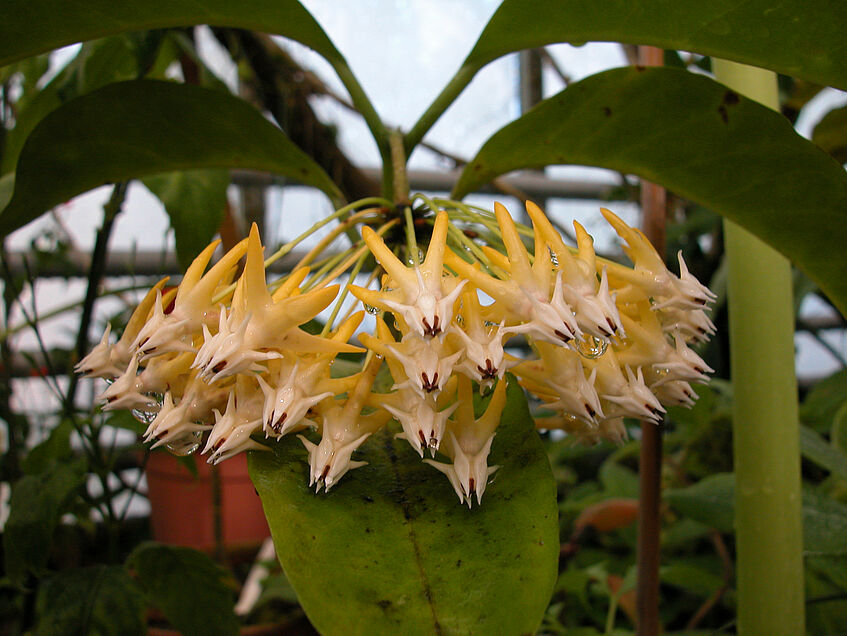
Hoya © BGUW_R. Hromniak
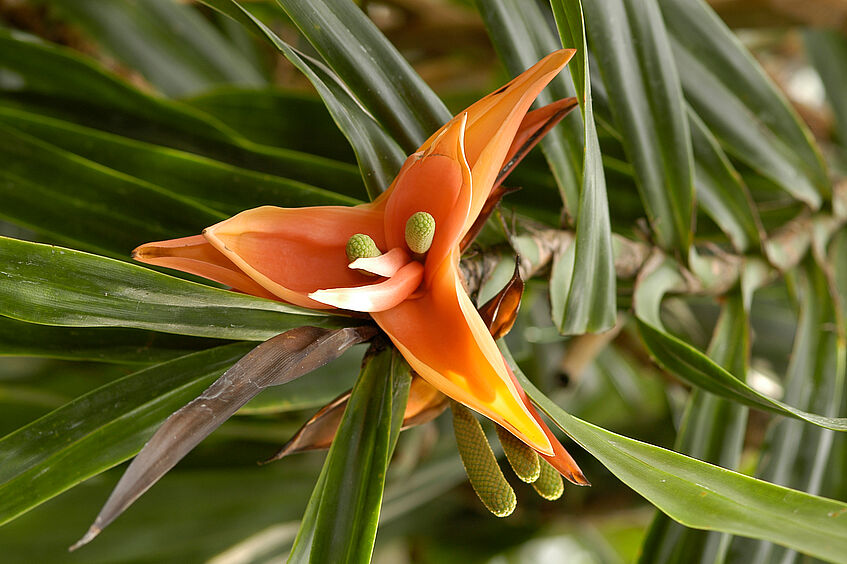
Freycinetia © BGUW_R. Hromniak
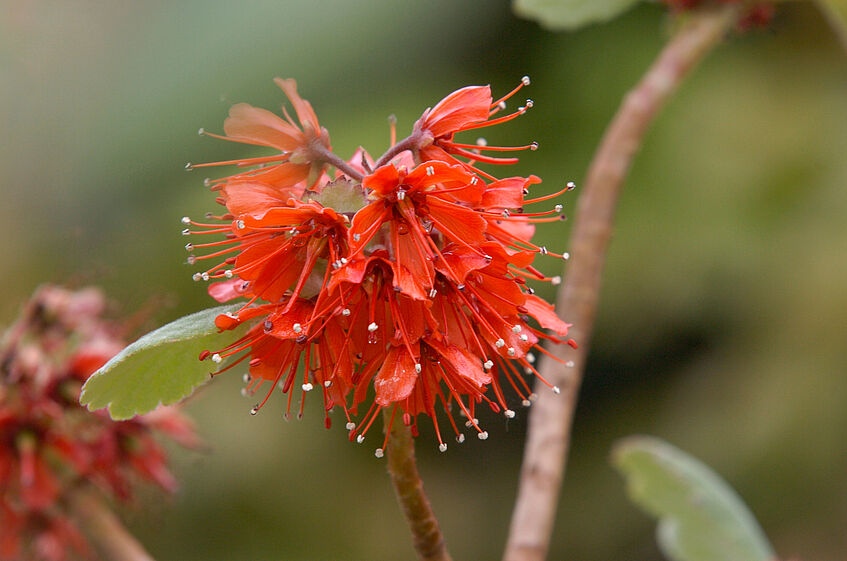
Greyia radlkoferi © BGUW_R. Hromniak
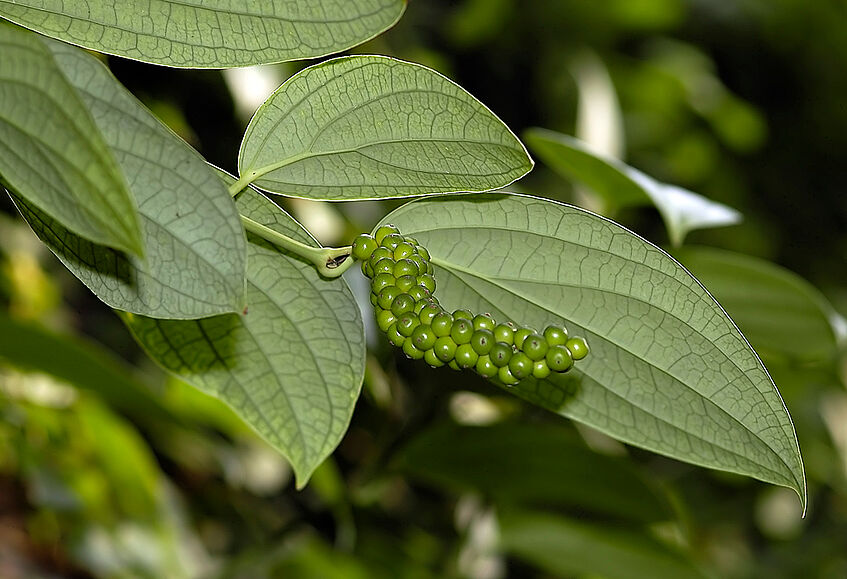
Piper nigrum © BGUW_R. Hromniak
The floor plan of the greenhouse facility, which was built over 100 years ago, has basically remained unchanged. Along with a few more recently built units, the facility now encompasses 17 buildings with a total surface area of about 1350 m².
The greenhouses contain plants required for research purposes and for university teaching or that need to be saved from extinction. The public has access only to the tropical house. Two windows provide a glimpse into the neighboring orchid and cactus greenhouses.
The climate regime in individual greenhouses differs with regard to temperature and moisture. The distinction is between cold, temperate and warm houses, which need to be kept either moist, moderately moist or dry. This enables cultivating the full range of plant species from every conceivable vegetation unit of the tropics and subtropics. The space in the greenhouses is fully occupied by ca. 6500 species and about 17,000 accessions. Beyond cultivating large plants in the ground itself and raising smaller plants in pots on greenhouse shelves, almost all the houses utilize the additional air space and light conditions higher up.
The greenhouses are connected to one another via the so-called "gardener's tract". This connection enables transporting plants from one house to the other without harm even during the cold season. This is also where the propagation work and repotting take place.
The greenhouses to the east are reserved for cultivating bromeliads, orchids, aroids, coffee relatives and gesneriads as well as many other tropical herbaceous and woody plant species. Hundreds of pots with smaller plants that require less water but lots of light and irradiation, or that happen to be in a resting phase, are kept on suspended racks. Moreover, several thousand epiphytic plants are hung up and cultivated in small baskets or tied onto bark along hundreds of meters of wire criss-crossing the houses.
The greenhouses to the west serve to cultivate or over-winter many species from tropical drylands (cactuses and other succulents) as well as woody plants and geophytes of the subtropics and Mediterranean regions. In summer, most of the plants from this greenhouse tract are put on display in the cold house group and the succulents group so that they can be enjoyed by our visitors.
